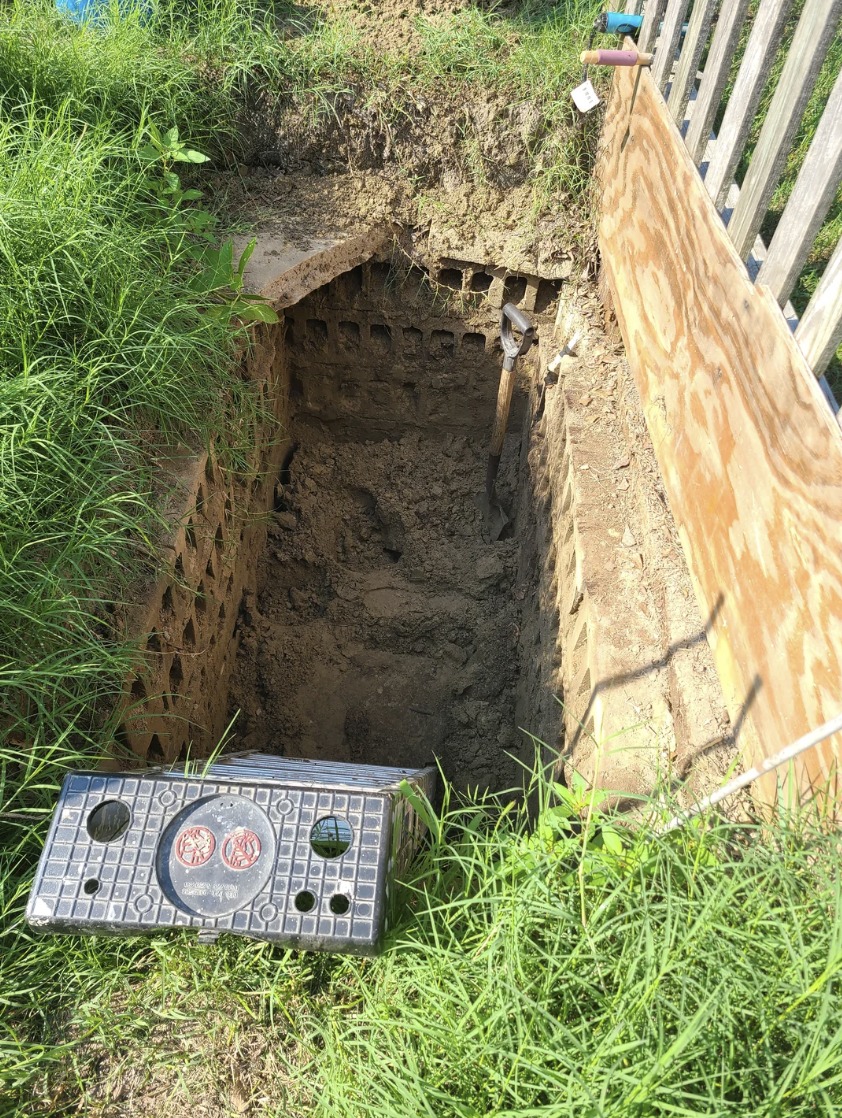It started out as a completely normal weekend. I had plans to sow some marigolds or maybe finally get around to installing the bird bath I’d been putting off. But those simple plans were quickly pushed aside when I noticed something strange in the corner of my yard—a perfectly square patch of ground that looked different from the rest. Curious, I grabbed a shovel and started to dig. What I uncovered wasn’t a lost treasure or a buried shoe like you might expect from backyard folklore. It was something much more intriguing—a mysterious, solid structure buried just beneath the surface.


As I dug a little deeper, I realized it wasn’t just any old debris. I saw concrete slabs secured with chicken wire, which immediately struck me as unusual. The shape, the materials, and the way everything was held together—it was clear that this wasn’t just random junk. It looked engineered, purposeful. My best guess? A hidden cistern. The pit was precisely built—five courses of concrete block deep, the top course starting about a foot below the ground, and the overall dimensions were about three feet wide by six feet long. It wasn’t the kind of thing someone whipped up on a whim. My first instinct was to think it might have been an old outhouse pit, but the dimensions didn’t quite fit. It was too well-constructed and far too large for that purpose.
That’s when I began to think about my grandmother’s stories of growing up on a farm without modern plumbing. She talked about rain barrels, hand-dug wells, and collecting water wherever they could. Suddenly, her stories weren’t just sentimental memories—they were context for what I was standing over. A cistern made perfect sense. In times when a reliable water supply wasn’t guaranteed, a cistern would have been essential. Families often built them to collect and store rainwater, especially if their wells were shallow or frequently ran dry. The structure I found fit the profile: purpose-built, deep enough to store a reasonable amount of water, and clearly designed to last. Could it have been something else? Maybe a septic tank, but it was far too clean and well-made for that. A root cellar or food storage pit came to mind, but the space wasn’t ventilated or spacious enough.
A dry well? Possibly, but everything about the layout and materials pointed toward storage rather than drainage. Every piece of evidence led me back to one conclusion—this was a hidden cistern, quietly buried for decades beneath the grass in my backyard. My house was built in the early 1900s, a time when indoor plumbing wasn’t standard. People had to make do with whatever systems they could put in place to meet basic needs. That pit, as unremarkable as it might look to some, was once a vital part of daily life. It was built with care, not for show but for survival. As I stood over it, I couldn’t help but reflect on the effort that went into building and living in homes like mine back then. Every inch of property had a purpose. Nothing was wasted.
That small pit told a much bigger story—it reminded me that this land once belonged to someone who depended on that cistern to get through their day. It held more than water; it held the sweat and intention of someone just trying to make life work. We tend to think of our homes as ours alone, but before we arrived, someone else lived their entire life within these walls and on this land. They dug that pit. They laid those concrete blocks. They covered it with slabs, not to impress, but because they needed water to cook, clean, and survive. So, the next time you’re digging in your garden and your shovel hits something unexpected—maybe a rock, maybe a root, or maybe a carefully laid concrete slab—don’t rush past it. Pause for a moment. Ask yourself what it might have been, who put it there, and why it mattered to them. You might just discover a piece of forgotten history, just like I did. That unexpected cistern didn’t just give me a backyard mystery to solve—it gave me a connection to the past and a deeper appreciation for the everyday struggles and solutions of those who came before me.





